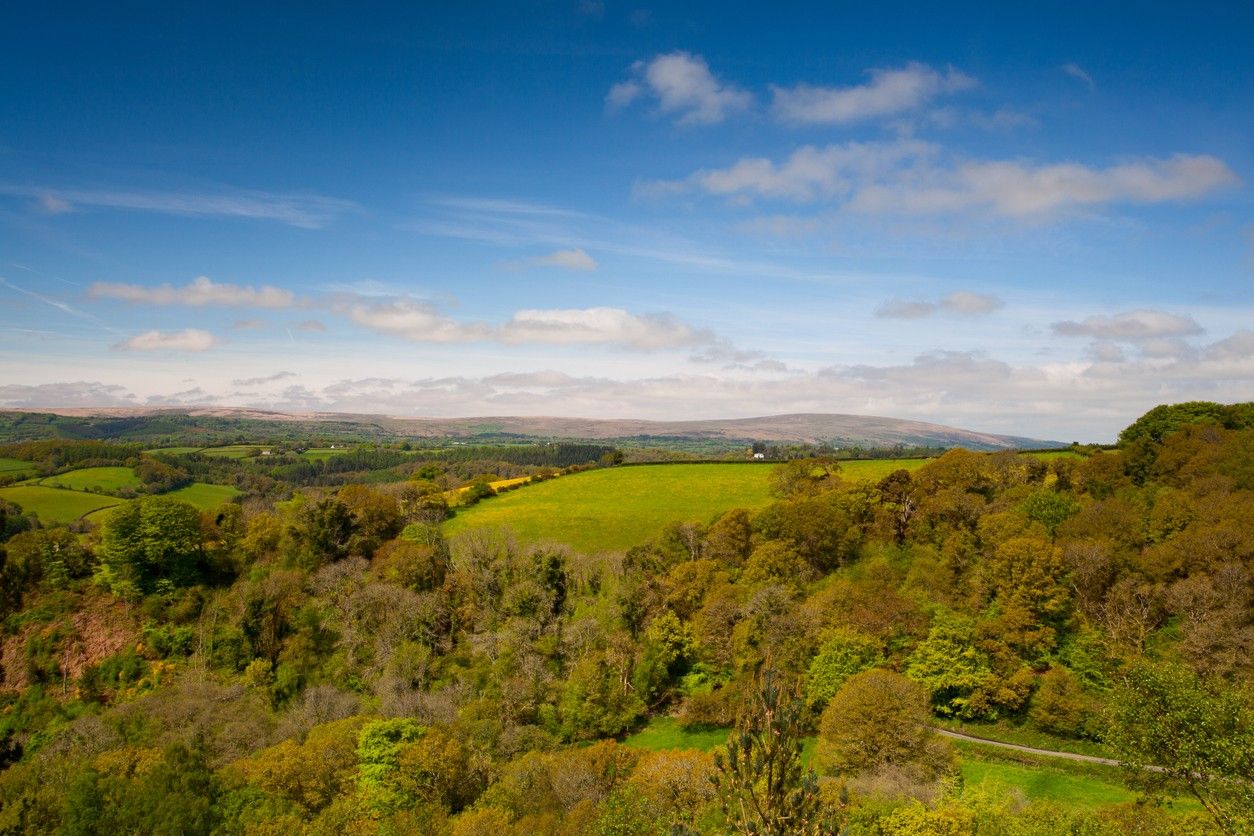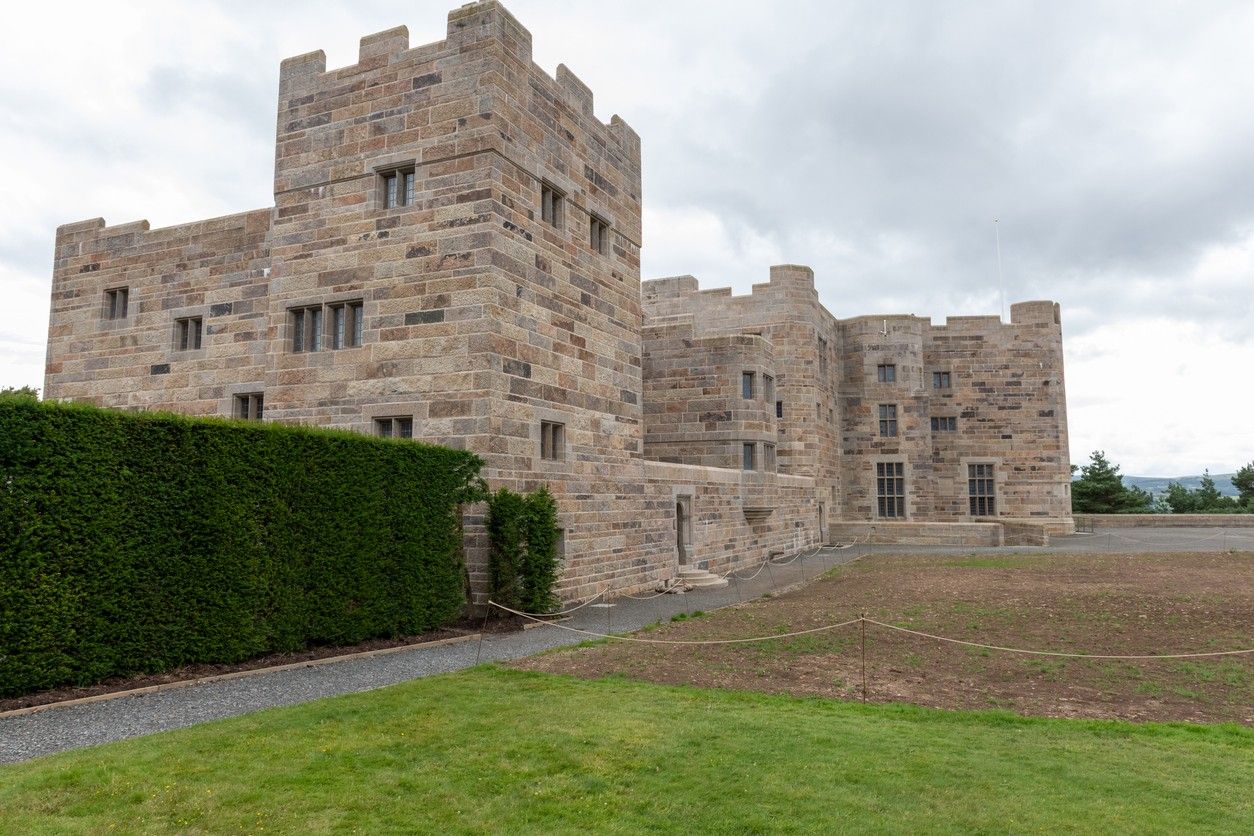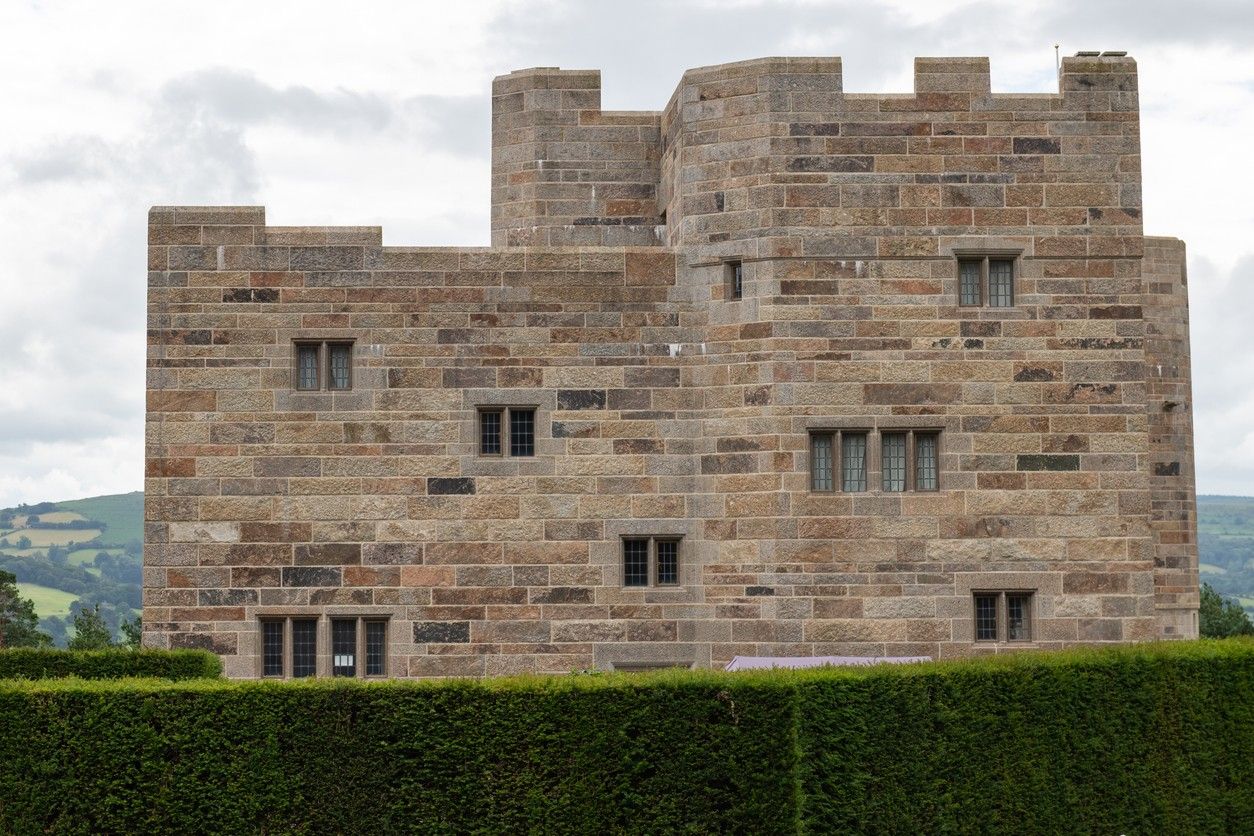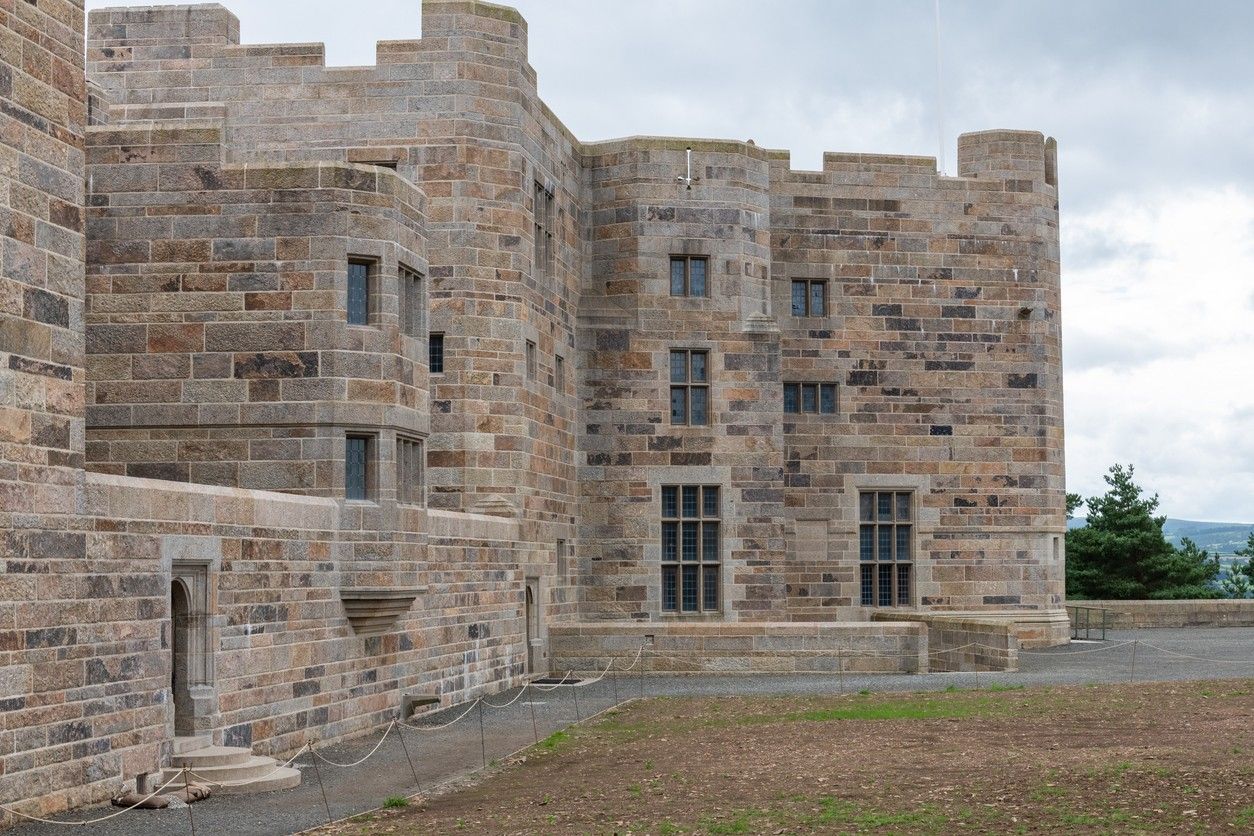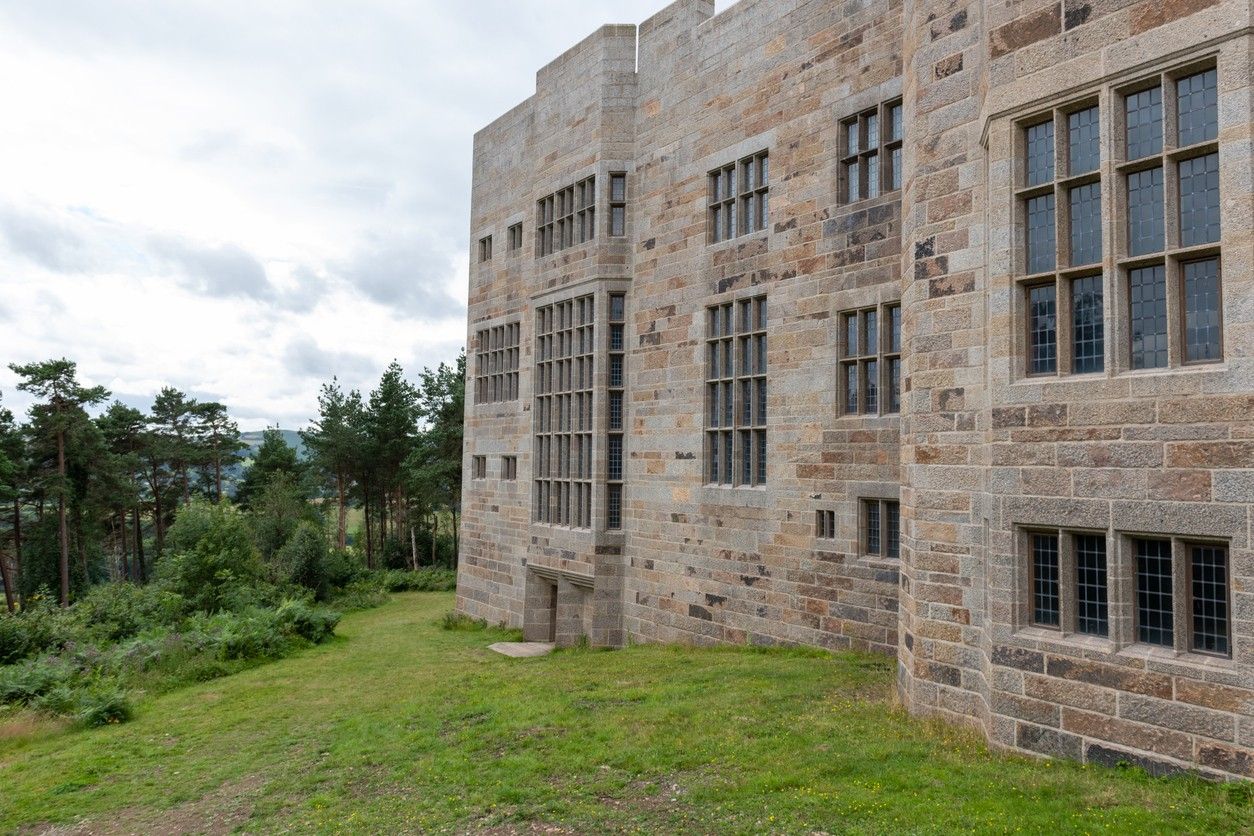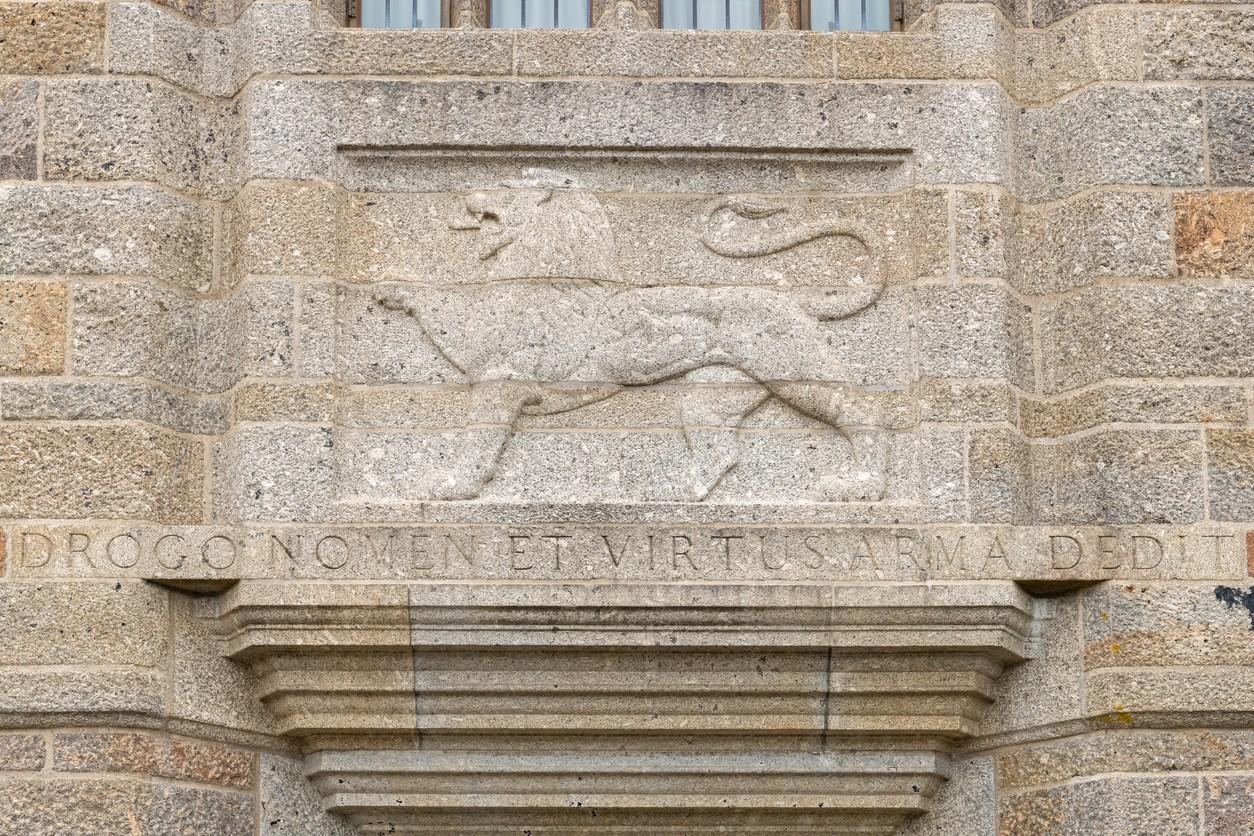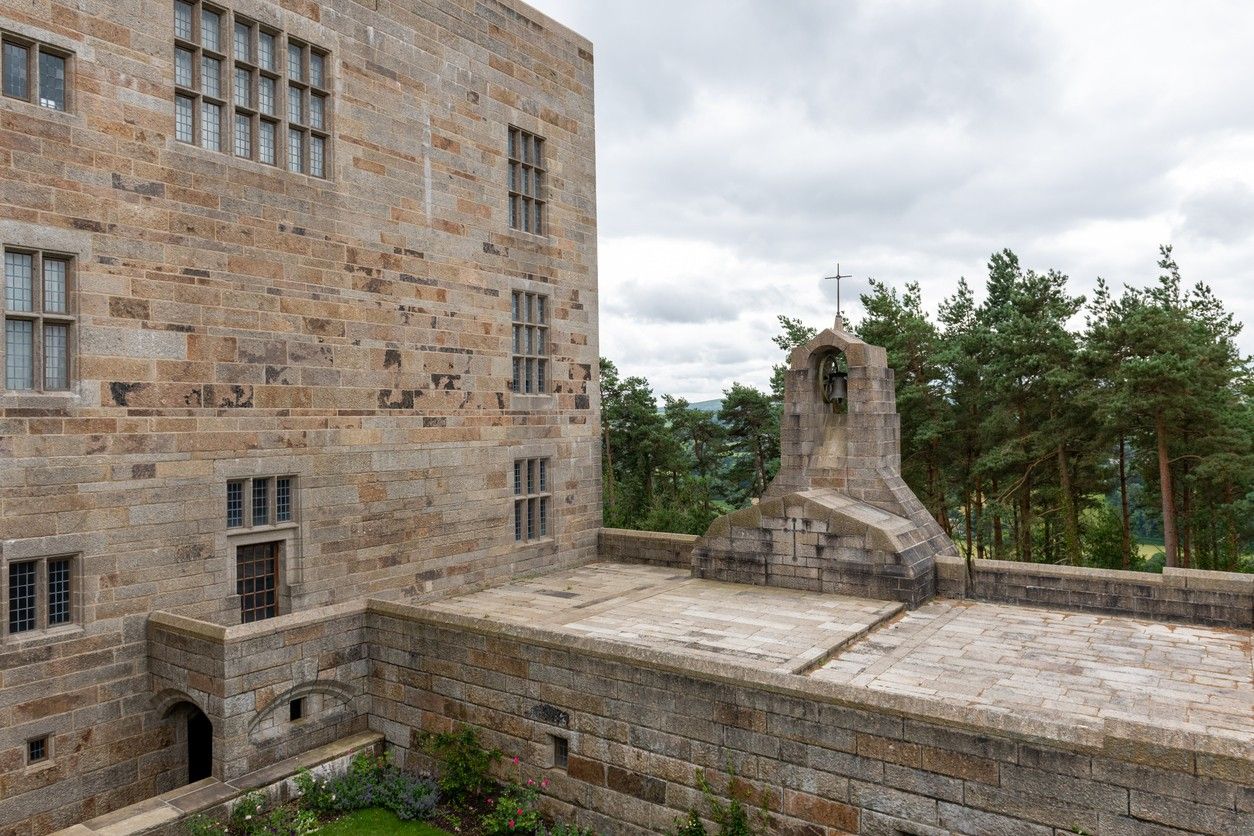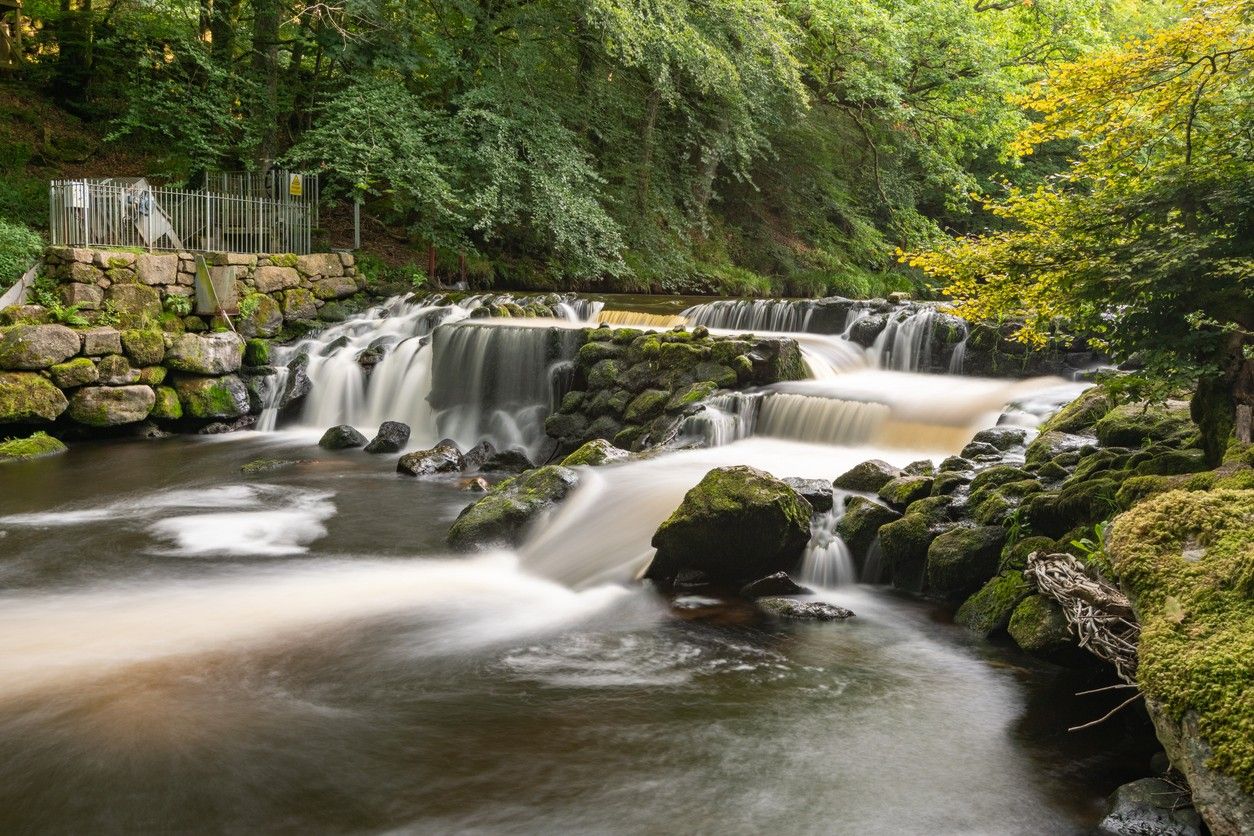Castle Drogo, situated in the picturesque county of Devon, is a remarkable architectural gem that stands as a testament to the vision and craftsmanship of the early 20th century. Designed by the renowned architect Edwin Lutyens, Castle Drogo is the last castle to be built in England, making it a unique and fascinating destination for history enthusiasts and architecture aficionados alike. The castle's striking exterior, crafted from granite and crowned with towering turrets, evokes a sense of grandeur and timelessness that captivates visitors from the moment they lay eyes upon it.
The History of Castle Drogo
The story of Castle Drogo begins in the early 20th century, when Julius Drewe, a successful businessman who had made his fortune in the tea trade, decided to fulfil his lifelong dream of building a family home that would stand the test of time. Drewe's vision was to create a castle that would combine the grandeur and elegance of a medieval fortress with the comfort and convenience of a modern country house. To bring his dream to life, Drewe enlisted the services of the renowned architect Edwin Lutyens, who had already made a name for himself as one of the most innovative and influential designers of his generation. Lutyens was initially hesitant to take on the project, as he was more accustomed to designing traditional country houses rather than castles. However, Drewe's enthusiasm and determination eventually won him over, and the two men began to collaborate on what would become one of the most ambitious and challenging architectural projects of the early 20th century. The construction of Castle Drogo began in 1911 and would continue for the next 20 years, with Lutyens and his team of skilled craftsmen working tirelessly to bring Drewe's vision to life. The castle was built using traditional materials and techniques, with granite blocks quarried from the nearby Dartmoor National Park and transported to the site by horse and cart. The walls of the castle were constructed using a technique known as "snecked rubble," which involved fitting the granite blocks together like a jigsaw puzzle, with smaller stones used to fill in the gaps.
Despite its many modern conveniences, however, Castle Drogo remains a testament to the enduring power and beauty of traditional craftsmanship. Every detail of the castle, from the hand-carved woodwork to the intricate stone carvings, speaks to the skill and dedication of the artisans who worked on the project. Lutyens himself was known for his meticulous attention to detail, and he reportedly spent countless hours on site, overseeing every aspect of the construction process to ensure that his vision was realised to perfection. Today, Castle Drogo stands as a monument to the vision and determination of Julius Drewe and Edwin Lutyens, and a testament to the enduring power of architecture to inspire and delight. The castle's unique blend of medieval and modern elements, combined with its stunning setting in the heart of the Devon countryside, make it a true gem of British architecture, and a must-see destination for anyone with an interest in history, design, or the art of building.
Accommodations Nearby
Gidleigh Park — A luxurious country house hotel located in Chagford, known for its exceptional fine dining restaurant.
Mill End Hotel — A charming hotel situated in Chagford, easily accessible by car and offering plenty of private parking.
Ilsington Country House Hotel and Spa — An elegant country house hotel located in Ilsington, featuring a relaxing spa.
The Oxenham Arms Inn, Hotel & Restaurant — A historic inn located in South Zeal, offering a blend of traditional charm and modern amenities
Leonardo Hotel Exeter - Formerly Jurys Inn — A modern hotel situated in the heart of Exeter, providing easy access to the city's attractions.
Mercure Exeter Southgate Hotel — A contemporary hotel located in Exeter, known for its excellent amenities and convenient location.
Holiday Inn Express - Exeter - City Centre, an IHG Hotel — A comfortable hotel situated in the centre of Exeter, offering great value for money.
The Globe Inn — A cosy inn located in Chagford, known for its warm hospitality and traditional atmosphere
The Chagford Inn — A charming inn situated in the heart of Chagford, offering a welcoming ambience and delightful accommodations
The Three Crowns — A popular inn located in Chagford, known for its friendly service and comfortable rooms
Travelodge Okehampton Whiddon Down — A convenient budget hotel situated near Okehampton, offering easy access to Dartmoor National Park
Castle Drogo, National Trust & Conservation Efforts
The National Trust, a renowned conservation organisation dedicated to preserving the United Kingdom's most treasured historic buildings and landscapes, acquired Castle Drogo in 1974. Since then, the National Trust Castle Drogo team has been working diligently to maintain, restore, and protect this architectural gem, ensuring that it remains a vital part of Britain's cultural heritage for generations to come. One of the most significant challenges faced by the National Trust in recent years has been the restoration of Castle Drogo's roof. The original asphalt roof, installed during the castle's construction, had begun to deteriorate, allowing water to seep into the building and cause extensive damage to the interior. To address this issue, the National Trust embarked on an ambitious project to replace the failing roof with a state-of-the-art waterproofing system. The roof restoration project was a complex and time-consuming endeavour, requiring the removal and replacement of over 2,000 granite blocks. The National Trust team worked tirelessly to ensure that the new roof would not only protect the castle from the elements but also maintain its authentic appearance, using materials and techniques that were sympathetic to the original design.
In addition to the roof restoration, the team has undertaken numerous other conservation projects throughout the castle. These efforts have included the repair of historic plasterwork, the conservation of precious artworks and furnishings, and the upgrading of the castle's electrical and heating systems to modern standards. The National Trust's commitment to the preservation of Castle Drogo extends beyond the physical structure itself. The organisation also works to protect and enhance the castle's surrounding landscape, implementing sustainable land management practices and encouraging biodiversity throughout the estate. By caring for the natural environment that encompasses Castle Drogo, the National Trust ensures that visitors can continue to enjoy the beauty and tranquillity of this special place for years to come. Thanks to the tireless efforts of the National Trust team, this architectural marvel has been restored to its former glory, standing tall as a testament to the skill, vision, and dedication of those who have worked to preserve it. As a result, visitors from all over the world can now experience the magic and wonder of Castle Drogo, gaining a deeper appreciation for the rich history and cultural significance of this extraordinary place.
Surrounding Area
The area surrounding Castle Drogo is a treasure trove of natural beauty, historic sites, and charming villages, offering visitors a wealth of opportunities for exploration and discovery. From the rugged landscapes of Dartmoor National Park to the picturesque streets of Chagford, there's no shortage of attractions to enjoy during your visit to this enchanting corner of Devon.
Dartmoor National Park
Dartmoor National Park, one of the largest and most iconic wilderness areas in southern England, is a vast expanse of rugged beauty that covers nearly 400 square miles of Devon's countryside. The park's landscape is characterised by its towering granite tors, windswept moors, and ancient woodlands, which together create a unique and captivating environment that has inspired generations of artists, writers, and nature lovers. The park's geology is dominated by its granite bedrock, which was formed over 280 million years ago and has since been shaped by the forces of nature into a series of dramatic tors and outcrops. These tors, such as the iconic Haytor and Hound Tor, offer breathtaking views of the surrounding landscape and are popular destinations for hikers and rock climbers. Dartmoor is also home to a diverse array of wildlife, including the famous Dartmoor ponies, which have roamed the moors for centuries and are an integral part of the park's ecosystem. The park is also a haven for rare birds, such as the ring ouzel and the cuckoo, as well as a variety of butterflies and insects that thrive in the unique moorland habitat.
For those interested in outdoor pursuits, Dartmoor offers a wealth of opportunities for hiking, cycling, and horseback riding. The park has over 450 miles of public rights of way, including the famous Two Moors Way, a long-distance trail that spans the length of the park and offers stunning views of the surrounding countryside. Other popular routes include the Dartmoor Way, a 95-mile circular trail that takes in some of the park's most iconic landmarks, and the Wray Valley Trail, a gentle route that follows the course of an old railway line through the heart of the moor. Dartmoor is also steeped in history and legend, with evidence of human habitation dating back over 10,000 years. The park is home to numerous ancient monuments, including stone circles, burial chambers, and hill forts, which offer a fascinating glimpse into the lives of our ancestors. The park is also famous for its myths and legends, such as the tale of the Hound of the Baskervilles, which was inspired by the park's eerie and atmospheric landscape.
There are numerous charming villages and towns to discover, each with its unique character and history. Widecombe-in-the-Moor, for example, is a picturesque village that is famous for its annual fair and its association with the folk song "Widecombe Fair," while Princetown is home to the notorious Dartmoor Prison, which has housed some of Britain's most infamous criminals over the years.
Chagford
Nestled on the edge of Dartmoor National Park, the charming market town of Chagford is a hidden gem that offers a perfect blend of history, culture, and natural beauty. With its picturesque streets lined with ancient buildings, vibrant arts scene, and stunning surrounding countryside, Chagford is a destination that will delight and inspire visitors of all ages and interests. The town's history dates back to the 12th century when it was granted a royal charter to hold a weekly market, a tradition that continues to this day. Every Thursday, the town square comes alive with the sights, sounds, and smells of the market, where local farmers, artisans, and traders sell everything from fresh produce and handmade crafts to antiques and collectables. Chagford's architecture is a testament to its rich history, with many buildings dating back to the 16th and 17th centuries. The town's narrow streets are lined with charming thatched cottages, elegant Georgian townhouses, and impressive public buildings, such as the iconic Market House, which has been the centre of town life for over 400 years.
For art lovers, Chagford is a true paradise, with a thriving community of artists, craftspeople, and musicians who draw inspiration from the town's unique character and stunning natural surroundings. The town is home to numerous galleries, studios, and workshops, where visitors can admire and purchase a wide range of locally made arts and crafts, from paintings and sculptures to pottery and textiles. Chagford is also a foodie's delight, with a variety of excellent restaurants, cafes, and pubs that showcase the best of local produce and culinary talent. The Three Crowns, a former coaching inn that dates back to the 13th century, is a particular highlight, offering a menu of classic British dishes made with locally sourced ingredients and served in a cosy and welcoming atmosphere.
Chagford is the perfect base for exploring the stunning countryside of Dartmoor National Park. The town is surrounded by miles of scenic walking and cycling trails, taking in everything from gentle river valleys to dramatic granite tors. The nearby River Teign offers excellent opportunities for fishing and wild swimming, while the ancient woodlands of the Teign Gorge are home to a variety of rare and fascinating wildlife. Despite its small size, Chagford is also a hub of cultural activity, with a variety of festivals, events, and performances taking place throughout the year. The Chagford Film Festival, held every September, is a particular highlight, attracting filmmakers and cinephiles from around the world for a celebration of independent and world cinema.
Teign Gorge
Just a stone's throw from Castle Drogo lies the breathtaking Teign Gorge, a dramatic landscape of steep-sided valleys, tumbling waterfalls, and ancient woodlands that has inspired artists and writers for centuries. The gorge is home to a diverse array of wildlife, including rare butterflies, birds, and mammals, as well as a stunning variety of flora that changes with the seasons. The best way to explore the Teign Gorge is on foot, with several well-marked trails leading through the heart of the valley and offering breathtaking views of the surrounding landscape. One of the most popular routes is the Teign Gorge Circuit, a moderate 5-mile hike that takes in some of the gorge's most spectacular scenery, including the dramatic Drogo Weir and the thundering Salmon Leaps waterfall.
For those seeking a more leisurely exploration of the gorge, there are several picnic areas and viewpoints scattered throughout the valley, offering the perfect spot to relax and take in the stunning views. The gorge is also home to the Drewe Arms, a charming pub that has been serving local ales and hearty meals to visitors since the 19th century. The Teign Gorge is also steeped in history, with evidence of human habitation dating back to the Bronze Age. The valley was once home to several mills and mines, and the remains of these ancient industries can still be seen today, offering a fascinating glimpse into the area's rich industrial heritage.
Planning Your Visit to the Castle
Ticketing Options — Visitors to Castle Drogo can purchase tickets on the day of their visit or book in advance through the National Trust website. National Trust members enjoy free entry to the castle and grounds, while non-members can purchase admission tickets at the entrance or online. Various ticket options are available, including family tickets and combined tickets that grant access to both the castle and the gardens.
Getting to the Castle — Castle Drogo is located near the town of Drewsteignton in Devon, England. The castle is easily accessible by car, with ample parking available on site. Visitors travelling by public transport can take a train to Exeter and then catch a bus or taxi to the castle. The nearest bus stop is located in the village of Drewsteignton, approximately a 1.5-mile walk from the castle entrance.
Best Time to Visit — The best time to visit Castle Drogo depends on personal preferences and interests. During the summer months, the gardens are in full bloom, offering a stunning display of colours and fragrances. Autumn is also a beautiful time to visit, as the changing colours of the surrounding woodland create a picturesque backdrop for the castle. Winter visits can be equally enchanting, with the castle's interior offering a cosy respite from the cold weather.
Guided Tours — Guided tours of Castle Drogo are available throughout the day, led by knowledgeable National Trust volunteers. These tours provide fascinating insights into the castle's history, architecture, and the lives of its former residents. Tours are included in the admission price and are an excellent way to deepen your understanding and appreciation of this remarkable property.
Learning and Education — Castle Drogo offers a range of learning and educational opportunities for visitors of all ages. The castle hosts regular workshops, talks, and events that explore various aspects of its history, architecture, and the conservation work undertaken by the National Trust. Educational resources, including guidebooks and activity sheets, are available to enhance the learning experience for children and adults alike.
Accessibility — The National Trust is committed to making Castle Drogo as accessible as possible for all visitors. The castle has level access to the ground floor, and a lift provides access to the upper floors for those with mobility issues. Accessible toilets and parking are available on-site, and mobility scooters can be borrowed from the visitor reception. Visitors with specific accessibility requirements are encouraged to contact the castle in advance to discuss their needs and ensure a comfortable and enjoyable visit.
Related Articles

Let us know you agree to cookies
We use marketing, analytical and functional cookies as well as similar technologies to give you the best experience. Third parties, including social media platforms, often place tracking cookies on our site to show you personalised adverts outside of our website.
We store your cookie preferences for two years and you can edit your preferences via ‘manage cookies’ or through the cookie policy at the bottom of every page. For more information, please see our cookie policy.
